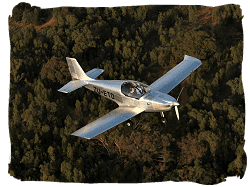SPLOG By DAN JOHNSON
As this is written, the aviation world is again buzzing about Oshkosh, or as EAA now prefers, EAA AirVenture Oshkosh.
The LSA world was exceedingly well represented at the big show. With the significantly new grounds layout, things don’t look exactly the same — and that’s a good thing. Once the vast majority of attendees walked through the new main gate, they were greeted by two major producers of LSA: Flight Design (of CT fame) was immediately on the right, while Cessna was on the left. (OK, Cessna makes more than LSAs and isn’t actually in LSA production yet, but it’s coming as certainly as tomorrow’s sunrise, says the Wichita giant.)
All over the Oshkosh grounds, people found LSA. They were in seemingly incongruous display areas as some were kit builders and some just entered the business in the last few years and were wherever they could find space.
The new LSA Mall — a mere 500 paces from the main gate down the new northeast paved walkway — hosted a collection of LSA, making comparisons a bit easier.
LSA Malls have been a big hit at air shows such as AirVenture and Sun ‘n Fun. Look for one at your favorite air show.
AROUND THE WORLD
Normally I don’t write about record attempts or exceptional flights until they are completed — and even then only if they are significant. Too many grand voyages end prematurely.
 But I’ve known Mike Blyth for decades and he’s already accomplished several daring flights. For example, his South to South expedition went from the southern tip of South America up through the USA across the Atlantic through Europe and back down to South Africa, all in weight-shift trikes.
But I’ve known Mike Blyth for decades and he’s already accomplished several daring flights. For example, his South to South expedition went from the southern tip of South America up through the USA across the Atlantic through Europe and back down to South Africa, all in weight-shift trikes.
So if Blyth says he is launching an Around the World Expedition, we need to pay attention. Blyth and his business partner James Pitman left South Africa July 17.
The trip is unusual in a few ways. One, their Sling LSA — from the business the two aviators co-own called The Airplane Factory — has just completed flight testing. Secondly, this flight will take place near the equator, requiring some very long legs over water. Third, they will go west around the globe — most go east.
The duo will make their 28,195-mile flight in the new D6 Sling, except they’ve modified this airplane to hold 118 gallons of fuel (about 24 hours worth!). A regular Sling will carry 29 gallons of fuel. Cruising at about 115 knots, they’ll have to log more than 200 hours to get back home.
NOW ARRIVING FROM SHANGHAI
Two Chinese delegates attended ASTM meetings in Freidrichshafen Germany in April, the first time the nation has been represented. Those reps indicated they believed ASTM acceptance in China may not be far off.
Meanwhile, Shanghai-based Yuneec is moving forward — and upward.
 Yuneec’s E430 was featured at AirVenture, along with a distinctly American design: the Flightstar Spyder (single place, Part 103-capable ultralight) fitted with a Yuneec electric motor.
Yuneec’s E430 was featured at AirVenture, along with a distinctly American design: the Flightstar Spyder (single place, Part 103-capable ultralight) fitted with a Yuneec electric motor.
Using a six-battery setup on its two seater, Yuneec expects 1.5-2 hours of flight and, with such an installation, payload is a respectable 400 pounds even with a 45-foot wing span. A 10-battery setup may fly 2.25-2.5 hours.
The LSA is “designed to be simple to use, easy to fly and with virtually zero vibration,” according to Yuneec officials. “It’s very smooth with low noise, no emissions, no fuel, extremely low maintenance and it’s environmentally friendly.
“Charging times of three hours for as little as $5 make electric a low-cost way to fly,” officials add.
On June 20 at an airfield north of Shanghai, the E430 performed two flights of around 15 minutes and did a series of basic test maneuvers. Under full power the E430 rolled 260 feet, rotating at 40 mph. A climb rate of nearly 1,400 fpm was achieved during the second flight. Top speed in level flight was 94 mph.
STEADY CHANGES ADD UP TO THE MAX
Evektor‘s SportStar became the first-ever Special LSA a little over four years ago, a distinction no one can ever take away from the Czech company.
Yet that exclusive title has not encouraged the company to rest on its laurels.
 The SportStar was one of the first success stories gaining entry to the GA flight school market.
The SportStar was one of the first success stories gaining entry to the GA flight school market.
While Evektor has not re-certified its airplane (like Flight Design and its CTLS, Remos and its GX, or TL Ultralight and its Sting S3), the design has, nonetheless, changed.
At Oshkosh, Evektor launched its Max model in two variations. The SportStar Max BT (for “basic trainer”) is the entry model, fleet priced at $110,000.
Flight schools that focus on instrument training may opt for the $155,000 Max IFR model, which comes equipped with the certified Rotax 912S (different than the ASTM-compliant “ULS” version).
The Max IFR is the first LSA that is Part 23 instrument compliant for IFR IMC flight, and can be used to train students up to and including a commercial with instrument rating, according to Evektor officials.
For personal use, SportStar has some enviable numbers to go with its cooperative handling. According to Josef Bostik, president of Evektor Aircraft, Inc., “Max can carry two persons in its 47-inch-wide cockpit plus a week’s supply of baggage at 110 knots for nearly 800 miles non-stop.”
For more on Sport Pilot, go to ByDanJohnson.com.
